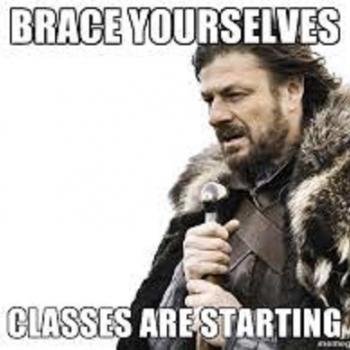Editors' Note: This article is part of the Patheos Public Square on the Pope in America: Implications, Collaborations, Challenges. Read other perspectives here.
Less than two weeks remain now until the much-anticipated arrival of Pope Francis in the United States. Of course, in the last two and a half years, in a world of social media and a 24- hour news cycle, we have all seen a good bit of him. It is different, though, somehow, to have him on U.S. soil, here in the flesh.
From the perspective of Catholic theology, that makes a lot of sense. Although it is of course concerned with God and with the realm of the spirit, the Christian faith always remains rooted in the physical. It begins, after all, with the claim that God not only created the material world, but then chose to draw close and restore a broken relationship with humanity precisely by coming in the flesh. For Catholicism, God-become-matter means that all of material reality receives a new kind of dignity. From the traditional devotion to relics, to a concern with meeting the immediate, physical needs of the poor, in Catholicism bodies matter. Touch matters. So there's a deeply grounded theological reason that the chance to be physically close to the pope, the representative of Christ on earth, might be especially meaningful.
The immediacy of physical touch, moreover, is perhaps the most important element in the sense that so many have of this pope's character: human, accessible, and above all, merciful. The images that have moved all of us most deeply have been images of one simple gesture: unhesitating embrace. We may identify with the ones who are embraced, so often individuals who would be otherwise marginalized and ignored. We may, on the other hand, feel a tug of inspiration to be the one who reaches out in this way. In either case, or both, these images communicate a reality that draws us in. No wonder we want to get closer.
Pope Francis has been clear that for him, this moment of tender, personal connection finds its origin in the personal encounter with Jesus Christ. For Catholics, who see the pope as representing Christ in a particular way, these images of Francis have been like icons of Christ himself. Any Christian, though, can find here a moving example of Christ-like compassion, and an inspiration for their own attempts to follow his teachings.
What about those who don't share Francis's faith, though? What might they look for in his arrival? Pope Francis is a religious leader, but his scheduled address to Congress symbolizes the way in which he reaches beyond the lines that divide various religious practices. Perhaps, again, a dimension of Catholic theology provides a helpful perspective. The Catholic Church subscribes to a traditional — and again fundamentally physical — claim regarding a bishop's authority. Bishops serve not only a certain group of people, but a geographic district, and they understand everyone in that place to be their concern. A "parish" refers not only to a congregation, but as can still be seen in the U.S. in Louisiana, to a district of physical dimensions. For Catholics, the bishop of Rome has a very large jurisdiction: not only Rome, but the whole world. Although an individual bishop is the shepherd of each diocese individually, the pope oversees all. In coming to the U.S., then, Pope Francis comes to visit a place that he understands himself to be officially assigned to serve.
This may seem an odd claim at a moment when some indicators suggest that Christianity in its organized forms is only losing ground on U.S. soil. Pope Francis is arriving as the most powerful figure in the Catholic Church, but, in relation to Americans as a group, he obviously does not arrive with power except his own moral authority.
Perhaps one more bit of papal tradition captures the situation best. When Pope Francis arrives in the United States, as is tradition, he will carry with him the papal staff, or ferula. This staff is unique to the pope; where other bishops carry a "crozier," or shepherd's hook, the pope's ferula is topped with a crucifix, as a sign of direct connection to Christ. The ferula is not used in liturgy, but rather outside the church, and in eras past it clearly signified the temporal power and authority the pope wielded. At the present moment, though, the pope's ferula is not so much a sign of power as it is a sign of vulnerability and encounter, signaled by the cross on top.
It seems to be a form of encounter the U.S. is hungry for.
9/16/2015 4:00:00 AM



